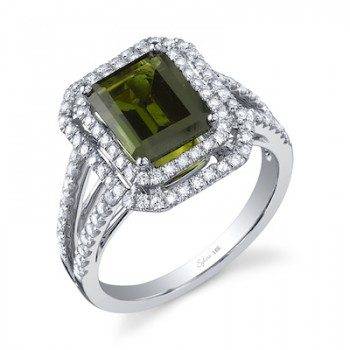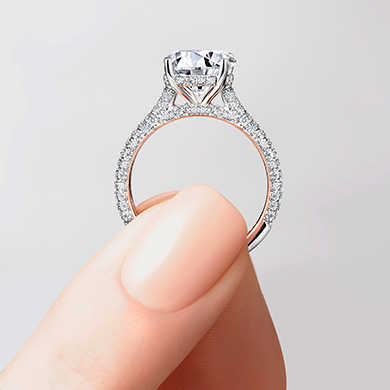October has two birthstones: Opal and tourmaline. Opal birthstone is the more traditional of the two, but in 1952 the Jewelry Industry Council urged adding pink tourmaline as an alternative October birthstone.
Opals are fun to shop for because they vary so widely. Pick one up, turn it this way and that so it catches the light, and appreciate its unique color and fire. Some are milky white, others are dark, all with flashes of green, blue, red, yellow and orange.
October babies claim the opal as their birthstone. So if you’re shopping for somebody with an October birthday consider the gift of a rare black opal or a radiant fire opal.
Opals form in cracks and cavities of volcanic rocks. They’re made of tiny silica spheres which are held together by water and more silica. Heat and pressure easily change its appearance. Impurities in the stone dictate its color and fire. Gas bubbles account for opals’ sometimes pearly or milky look. Iron oxide is responsible for flashes of yellow and red. In black opals, magnesium oxide and organic carbon make them flash red, blue and green. Opal and quartz have the same chemical formula, except opals contain 5 to 10 percent more water.
Australia and Mexico are most famous for opals. Nevada, Brazil, Nicaragua, Japan, Honduras, Guatemala and Ireland also produce opals commercially.
Opal Lore
Many cultures prize opals. Ancient Romans considered opals a symbol of hope and love. Arabs believed opals plummeted from the sky in flashes of lightning, which makes sense when you consider their fire. Some Arabs thought opals could make a person invisible. Hence it became a favorite stone amongst spies and thieves.
Medieval gem enthusiasts used opals like a modern mood ring. They thought a change in an opal’s color reflected the wearer’s health. They also believed opals strengthened the heart and could protect against infection, fainting and foul air.
Opals got some bad PR during the 14th century, when some Europeans held the stone responsible for the Black Death. Supposedly opals shone extra brightly while fevered wearers died of the plague, then went dull as the soul parted from body.
Fortunately, the opal October birthstone made a comeback by Elizabethan times. Shakespeare memorialized opals in Twelfth Night, calling them the “queen of gems.” Queen Victoria gifted her children with beautiful opal jewelry.
A Delicate Beauty
Since opals are easily altered by heat and pressure, day-to-day activities can be hard on this fragile stone. Depending on the opal, it ranks only 5.5 to 6.5 on the Mohs scale. This means that earrings and pendants are safer places for opals than being set in rings and bracelets. If you choose to wear an opal ring, remember to take it off before washing dishes or other manual labor. Some jewelers suggest occasionally soaking opals in plain water so they don’t dry out. But don’t use oil or ultrasonic cleaners on your opals.
When shopping for opals, beware of doublets and triplets. These are composite stones made by attaching a thin opal layer on top of a less expensive stone or a piece of glass. These are extra-likely to chip and crack.
Tourmalines are versatile because they come in so many colors. In fact, they’re especially known for combining multiple colors in one gemstone. Tourmalines that display more than one color are called bi- or tri-color. The watermelon tourmaline is a gorgeous example, combining bands of pink, green and white like its namesake fruit. While originally pink tourmaline was the October color, now all manners of tourmaline are accepted as October birthstones.
Tourmalines are found in Afghanistan, Brazil, East Africa and the USA, most notably in the states of North Carolina, South Dakota, California and Maine. At 7 to 7.5 on the Mohs scale, tourmalines are substantially tougher than opals.



